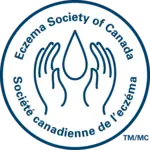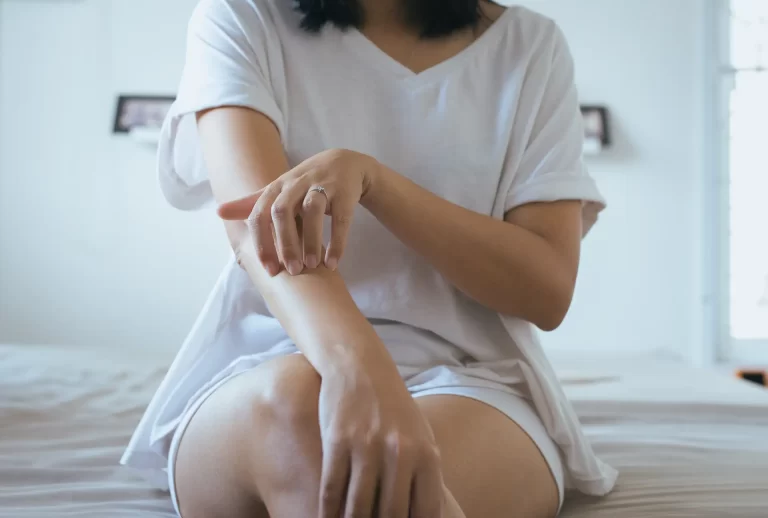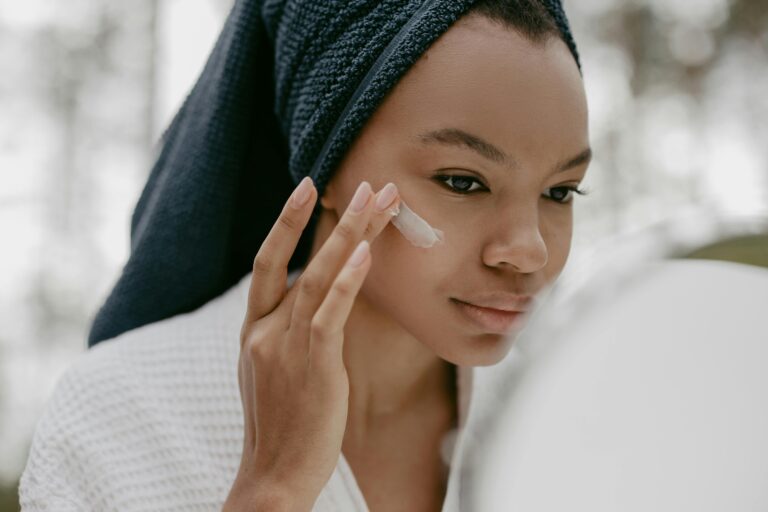
ESC explores prurigo nodularis (PN) and how this condition can impact eczema sufferers
Prurigo nodularis (PN), also known as chronic prurigo, is a skin condition separate and distinct from eczema but commonly experienced by people who also live with eczema. Not all patients with eczema have PN, and not all patients with PN have eczema.1
To better understand the relationship between eczema and PN, ESC reached out to Dr. Maxwell Sauder, Toronto-based dermatologist who has also studied PN treatments in clinical trials.
What is Prurigo Nodularis (PN)?
Dr. Sauder tells ESC, “Purigo nodularis, called PN for short, is a chronic debilitating neuroimmune skin condition that is characterized by extreme itch. ‘Neuroimmune’ may sound complicated, but it means the condition is caused by biological interactions between the nervous system and the immune system, and in the case of PN, the skin is also involved.” Dr. Sauder also tells us, “The extreme itch of PN leads to regular loss of sleep and visually obvious changes of the skin like rash and bumps that we call nodules. These factors can lead to social isolation, depression and other mental health conditions.” We asked Dr. Sauder if PN is as common as eczema, “PN is a much rarer condition. It is not as commonly seen as eczema but similar to eczema in that it is chronic .”
What are the symptoms of PN?
PN typically starts with very itchy skin, and then patients scratch, pick and rub the skin. Over time, and possibly within a few weeks, PN develops into itchy bumps and plaques on the skin. It typically takes persistent itching and rubbing of the skin for the bumps and nodules to appear. Dr. Sauder shares, “PN can be quite severe and unrelenting, with intensely itchy skin, and the itch can be constant.” The symptoms of PN are very distressing for patients and most often include nodules (also referred to as lumps or bumps on the skin.1 Patients also report bleeding, scabbing, and sores on the skin, along with skin discoloration.1,2 Negative impact to quality of life include sleep disruption, interruption to daily life, and negative impacts to relationships, social life, and work and school.1 Some patients even report difficulty with daily activities, including dressing and performing self-care tasks. Dr. Sauder adds, “Beyond the physical, PN can have an enormous psychological impact on patients, leading to anxiety and depression, and can cause sufferers to withdraw socially. Patients often miss out on enjoying life, as they fear showing their skin and having others think they have an infection or are contagious.”
How is PN treated?
Dr. Sauder tells ESC, “ PN has historically been a difficult disease to manage with limited treatments that work well. Older PN treatments were less likely to provide good itch relief, nor could they clear the skin of lesions rapidly and safely. This has made PN a very difficult condition to treat and a challenging condition to live with. The lack of approved treatments for PN leaves patients with critical unmet needs.” Dr. Sauder reveals, “PN is typically treated with systemic immunosuppressants that have not been specifically studied for PN, and while they may offer some relief, they can also come with bad side effects. Sometimes, antidepressants are also used to treat PN, as they work on the neurological component of the condition. We still don’t have strong evidence that these older off-label treatments are effective in treating the condition.”
Who is at greater risk of suffering with PN?
Researchers have found that the condition is more common in people who are aged 50 or older, in people with skin of colour, and in people with other long-term diseases.2
The long-term diseases that are commonly linked to a higher risk of developing PN include atopic dermatitis (the most common form of eczema), contact dermatitis, diabetes, certain kidney diseases, certain lymphomas, untreated HIV, and certain mental health conditions.2
Is there hope for patients with PN?
Dr. Sauder tells us, “While there is currently no cure for PN, the good news for patients is that there are new therapies that demonstrate significant benefits, including reductions in itch and improvements in the nodules on the skin.” He also shares that “Quality of life improvements have been seen in the clinical trials with patients reporting improvements in sleep, mental health, and daily functioning. In a condition where we had treatments with such limited effectiveness, this is great news.”
Eczema Society of Canada (ESC) thanks Maxwell Sauder, MD, FRCPC, DABD, for his volunteer contribution to this educational content.
This blog was developed as part of our Educational Content program, and funding support for this initiative has been provided by AbbVie, Arcutis Canada, Inc., Eli Lilly Canada Inc., Incyte Biosciences Canada, and LEO Pharma Inc.
References:
- Rodriguez D, Kwatra SG, Dias-Barbosa C, Zeng F, Jabbar Lopez ZK, Piketty C, Puelles J. Patient Perspectives on Living With Severe Prurigo Nodularis. JAMA Dermatol. 2023 Nov 1;159(11):1205-1212. doi: 10.1001/jamadermatol.2023.3251. PMID: 37728897; PMCID: PMC10512162.
- Ludmann, P. Pruigo nodularios: overview. American Academy of Dermatology Association. Sept 14, 2021. Accessed: June 11, 2024. www.aad.org/public/diseases/a-z/prurigo-nodularis-overview
Disclaimer: Information provided in this resource does not constitute medical advice and is not intended to be used as a diagnostic tool. The information is up-to-date at time of publication. All medications, interventions, and treatment plans have risks and benefits, and it is important that individuals discuss their or their child’s specific health care needs with a qualified health care professional.
June 2024



